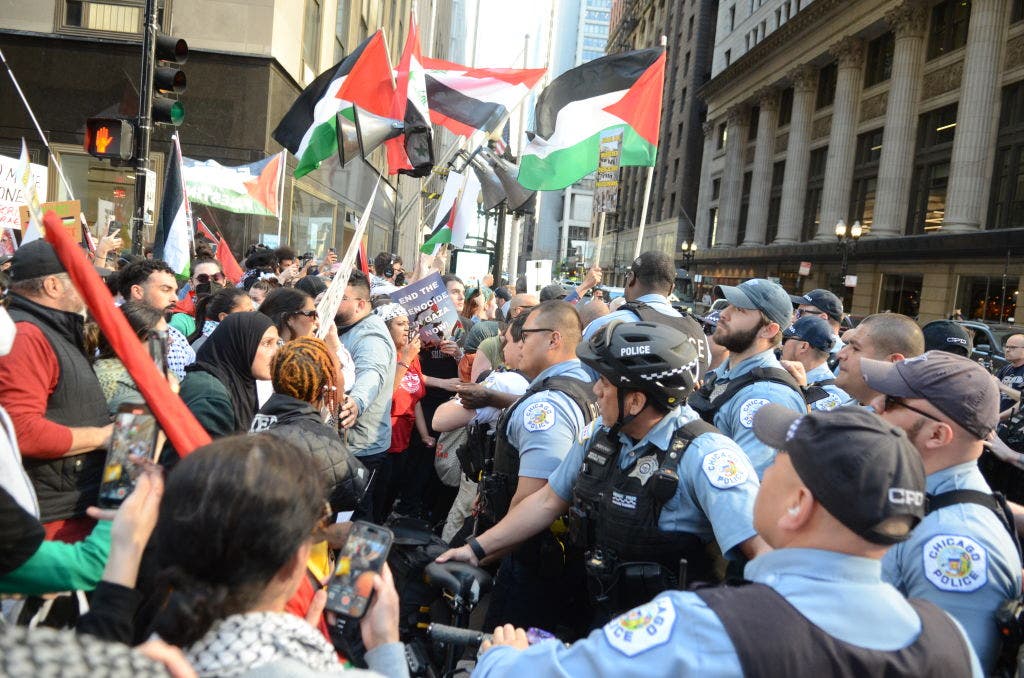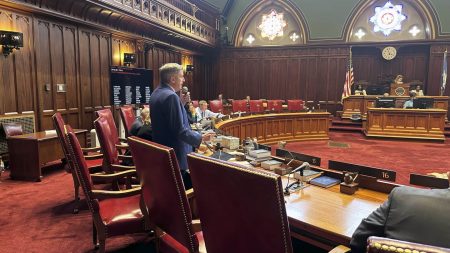An edition of the United Nations Division for Palestinian Rights’ NGO Action News linked readers to the U.S. Campaign for Palestinian Rights list of “5 Ways to Take Action for Tax Day.” The list included instructions on how protesters could disrupt for a free Palestine, with a hyperlink for a coordinated multi-city economic blockade. Anti-Israel agitators disrupted traffic and cities across the U.S. to demand a Gaza ceasefire. Protests were held in various locations such as airports, bridges, highways, and corporate headquarters.
Anne Bayefsky, president of Human Rights Voices, accused the U.N. of aiding and abetting pro-Hamas anarchists through their newsletter that contains links to radical anti-American and anti-Israel agitators. The U.N. disclaimer stating they are not responsible for linked sites was criticized as “bogus.” Dozens were arrested during the protests, including in Detroit where police reported vehicles ignoring traffic signals and nearly causing accidents. The U.N. was questioned about whether they approve items within their publication and author summaries for NGO Action News.
The U.S. Campaign for Palestinian Rights protest guide contained inflammatory remarks, including calling President Biden “Genocide Joe” and accusing Israel of mass murdering Palestinian families with U.S. tax dollars. Stéphane Dujarric, spokesman for the U.N. Secretary-General, clarified that the secretary-general does not have the legal authority to label events as genocide. The International Court of Justice urged Israel to allow Gazans access to humanitarian aid and assist Palestinian civilians but did not find Israel guilty of genocide.
The rise in anti-Semitic incidents in the U.S. was addressed in the context of anti-Israel protests after October 7. The Anti-Defamation League reported a 140% increase in anti-Semitic incidents between 2022 and 2023, with rises in assaults, vandalism, and harassment. The ADL observed explicitly anti-Semitic and anti-Zionist rhetoric at anti-Israel rallies in the U.S. since October 7. The U.N. Secretary-General has raised concerns about the rise of anti-Semitism globally and stated that calls for the destruction of Israel are a form of modern anti-Semitism.
Anne Bayefsky criticized the anarchy on the streets of the U.S. as a wake-up call for American lawmakers and the criminal justice system, highlighting the U.N.’s history of anti-Israel and anti-Jewish bias. The Anti-Defamation League’s Audit of Antisemitic Incidents documented a significant increase in anti-Semitic incidents in the U.S., with calls for Guterres to resign over his treatment of Israel. The U.N. Secretary-General has spoken out against the rise of anti-Semitism in various societies and condemned those who call for the destruction of Israel as engaging in modern anti-Semitism.
















